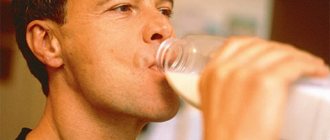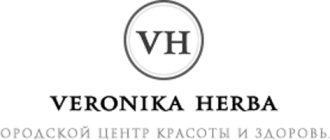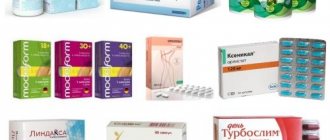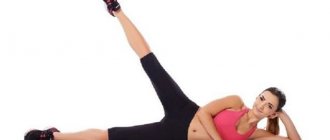- Description of the procedure
- Indications
- Step-by-step instructions for the procedure
- How many procedures will be required and how often can it be done?
- Impact zones
- Effect before and after the procedure
- Pros and cons of ultrasonic cavitation
- Disadvantages of ultrasonic cavitation
- Contraindications
- Preparation for the procedure
- Side effects
- Ultrasonic cavitation and liposuction
- Vacuum Ultrasonic Cavitation
- Ultrasonic cavitation and RF lifting
- Carrying out the procedure at home
Ultrasonic cavitation is called the new non-surgical liposuction. With its help, you can lose weight in problem areas and tighten your body without injections or exhausting physical activity. Noticeable transformations are visible after the first procedure, and the results of completing the course are similar to a month of classes in the fitness room.
However, to maintain the result, it is necessary to rebuild your diet. If you overeat, the split fat will form again.
Description of the procedure
Ultrasonic cavitation is a cosmetic, non-injection procedure for removing unwanted fat in problem areas.
How does ultrasonic cavitation work:
- The device emits low-frequency ultrasound;
- Inside the fat cells (adipocytes), in response to ultrasound, a small bubble is formed, which gradually increases;
- The adipocyte swells, the cell membrane (wall) cannot withstand the tension and ruptures;
- The adipocyte is destroyed, and all the structures that were inside the cell are broken down into breakdown products (triglycerides), enter the lymphatic and blood vessels, then go to the liver and are broken down into glucose - the energy substrate for any cells in the body.
Low-frequency ultrasound waves have a destructive effect only on adipocytes; they do not have such a pronounced effect on other cells (skin, muscles and blood vessels) (without negative consequences) due to the strength and elasticity of these structures.
Review
According to Christopher Brennen's definition: “When a liquid is subjected to pressure below a threshold (tensile stress), then its continuity of flow is disrupted and vapor cavities are formed. This phenomenon is called cavitation. When the local pressure of a liquid at some point falls below the value corresponding to the saturated vapor pressure at a given ambient temperature, then the liquid changes to another state, forming mainly phase voids, which are called cavitation bubbles. Another formation of cavitation bubbles is possible through local energy supply. This can be achieved by focusing an intense laser pulse (optical cavitation) or by sparking an electrical discharge."
The physical process of cavitation is exactly the same as the process that occurs during boiling. The main difference between them is the change in the phase state of the liquid. Boiling is a process in which the local saturated vapor pressure of a liquid is higher than the local ambient pressure and sufficient energy is present to change the normal state of the liquid into a gaseous state.
For the cavitation phenomenon, a surface for the formation of cavitation “bubbles” is needed. This surface consists of impurities on the walls of the reservoir and impurities contained in the liquid. It is generally accepted that a water-repellent (hydrophobic) surface will stabilize the appearance of small bubbles. These earlier bubbles will begin to grow indefinitely when they are subjected to a threshold pressure called the Blake threshold.
Step-by-step instructions for the procedure
Stages of ultrasonic cavitation:
- Consultation with a cosmetologist. Anamnesis collection, examination, exclusion of contraindications for the procedure. Selecting the treated area.
- Setting up the device. The patient is positioned on the couch in a supine or reclining position. A special gel is applied to the problem area (similar to what is used during ultrasound so that the skin does not rub and the device’s sensor fits tightly to the body).
- Carrying out ultrasonic cavitation. Depending on the area, the procedure lasts from 20 to 40 minutes.
- Completion of the session: the patient wipes the remaining gel from the skin.
To enhance the fat burning effect, it is recommended to undergo additional cosmetic procedures: pressotherapy, lipolytic injection cocktails, lymphatic drainage or massage.
Methods of fighting at home: massage, wraps, scrub, masks, exercises, diets
Women are ready to make any sacrifice to become the queen of the beach and drive men crazy with their smooth legs.
Depending on the financial status and degree of cellulite, different treatment methods are used:
| Stage of development | Description | Treatment |
| First stage | Easily treatable. At the first stage, cellulite is not so noticeable, but when squeezed, orange pits treacherously appear. The thighs diverge noticeably in width, the elasticity of the skin is reduced |
|
| Second stage | Cellulite is visible to the naked eye, the tubercles are deep and dense | Work on yourself in a complex:
|
| Third stage | The orange peel has spread not only to the butt and legs; in some places the skin has lost sensitivity. The flaws stand out very much | Fulfill all conditions:
|
| Fourth stage | Some areas of the skin have atrophied, the shade has changed from natural flesh to bluish. The legs and hips do not look aesthetically pleasing, the mounds are deep, the body becomes shapeless | Contact a specialist. Work on yourself daily with the help of:
|
Important! At the last advanced stage, you can contact a surgeon. To restore the beauty and functions of the circulatory system, surgery cannot be avoided.
It is impossible to get rid of cellulite spots in a week, so don’t expect a miracle right away. But over this period of time it will be possible to significantly reduce the number of skin irregularities.
With the help of simple ingredients you can perform anti-cellulite manipulations at home.
The best methods of struggle according to cosmetologists:
- Massage with anti-cellulite oil and cream. It is rubbing that plays the main role in the fight, and not the product itself. Rubbing the buttocks enhances the penetration of the active substance into the deep layers of the skin. There is no need to invent complicated recipes; use olive or coconut oil for massage.
- Scrubbing. An important preparatory stage of massage. It’s easy to prepare a scrub at home: don’t throw away the coffee grounds, but treat your entire body with it. This method increases blood flow in the organs.
- Natural wraps with clay, red pepper. They help remove excess fluid from the body. After massage procedures, wrap yourself in cling film, wrap yourself in a blanket and enjoy. The duration of this procedure is about an hour.
- Essential aroma baths, water massage with a brush. Forceful stimulation helps to warm up tissues. Take an ethereal bath with 2-3 drops for 15 minutes, rub problem areas of the skin with a special brush. Baths help get rid of toxins.
Physical exercise. A girl's best friend is squats. Work your thigh muscles to reduce fat.
Medication methods of treatment. Cosmetic intervention helps to achieve successful results in a short time. Such pleasure will cost a tidy sum.
Salon procedures using special devices. The most effective method. To get rid of cellulite, the latest cosmetic techniques are used. To prevent the recurrence of orange blossoms, take care of the beauty of your skin yourself.
Advice! He considers honey massage to be the best type of home massage. Strong pats help break down fat.
Pros and cons of ultrasonic cavitation
Benefits of the procedure:
- There are no age restrictions;
- Uniform figure correction;
- No anesthesia (even local) or painkillers are needed;
- Used over a large area of the body;
- No rehabilitation required;
- The integrity of the skin is not compromised (no punctures or cuts);
- There are no scars, marked swelling or bruises after the session;
- Skin sensitivity is completely preserved;
- Lifting effect (skin tightening);
- The result is noticeable after several procedures;
- Cumulative effect;
- Pronounced figure correction after completing the course;
- There are no strict restrictions even on the day of the procedure.
Advantages
Cavitation is considered one of the safest and fastest methods of losing weight. Benefits of the procedure:
- speed of results;
- painlessness;
- lack of anesthesia;
- no scars or scars after the procedure;
- there is no recovery period - you can immediately engage in your usual activities;
- no side effects;
- the procedure takes 30-50 minutes;
- over the next days after execution, the result only improves;
- the skin becomes more elastic.
Results of cavitation in the Mandala Beauty Club salon (Kyiv)
Contraindications
- Pregnancy and lactation;
- Oncological diseases;
- Bleeding disorders;
- Metal structures in the treated area (prostheses);
- Autoimmune diseases or immunosuppression (decreased immunity);
- Osteoporosis;
- Liver diseases;
- Kidney failure;
- Diabetes;
- Damage to the cardiovascular system;
- Presence of a pacemaker or other electronic devices to maintain life support;
- Hernias;
- Violation of the integrity of the skin in the treated area;
- Individual intolerance to ultrasound;
- Exacerbation of chronic diseases.
Side effects
Ultrasonic cavitation is a safe method of non-surgical liposuction. However, in some cases side effects are possible:
- Skin burn. This is a common problem for people with sensitive skin, which is why it is so important to answer your doctor’s questions honestly during the consultation before the procedure.
- Dehydration of the skin. After the destruction of adipocytes, their remains and metabolic products are urgently sent to the lymph and blood to “clean up” the site of the lesion. As a result, the amount of intercellular fluid is locally reduced, and the skin may be drier than usual for several days. The problem goes away on its own 24-48 hours after the procedure.
- Inflammatory reaction. Possible in the presence of immune diseases.
Permissible exposure zones
- The scope of the procedure is quite wide:
- Face contour lifting.
- Increased skin elasticity on the neck.
- Removing fat deposits from hands.
- Reduction in the volume of the abdomen and oblique muscles of the peritoneum.
- Reduction of cellulite and wrinkles on the back and buttocks.
- Reduction of “orange peel” and volume on the hips.
Important!
Ultrasonic cavitation is prohibited in the area of the reproductive organs, as well as in the lower abdomen.
Ultrasonic cavitation is recommended in situations where:
- Body mass index is higher than normal.
- Presence of fatty tissue and cellulite.
- Subcutaneous defects after surgical liposuction.
- Violation of volumes and excess weight.
Ultrasonic cavitation is prohibited in the following situations:
- Oncology.
- Diabetes.
- Osteoporosis.
- Taking ibuprofen and paracetamol.
- Skin diseases.
- Lactation.
- Pregnancy.
- Weak immunity.
- Period of ORV, menstruation.
Side effects
Traditionally, ultrasonic cavitation does not cause negative consequences. But in some cases, an individual reaction and side effects are still possible:
- If lipids enter the bloodstream, inflammatory reactions are possible.
- Dehydration of the body in case of non-compliance with the drinking regime.
- Pancreatic dysfunction.
- Increase in sugar (optional, temporary).
- Increase in body temperature immediately after the procedure.
- Increased load on the liver.
It is extremely important to follow dietary recommendations and drinking regime. Failure to comply with the instructions can lead to negative consequences: dizziness, nausea, and the formation of wen.
Ultrasonic cavitation and liposuction
Traditional liposuction is a surgical method for removing excess fat tissue. It is traumatic, dangerous and requires preparation before surgery and recovery after it.
Laser liposuction is a minimally invasive method for removing excess fat tissue. First, adipocytes are destroyed by laser radiation, after which the fat is pumped out through a thin cannula. The disadvantages of this method are the same as the traditional one: it is a traumatic, dangerous method that requires pain relief, preparation for surgery and rehabilitation.
With ultrasonic cavitation, punctures and cuts are not required. The skin remains intact. After the action of ultrasound, ruptured adipocytes are broken down into fatty acids and sent by lymph and blood to the liver, where they are used as energy. The technique is painless and does not require hospitalization, preparation or recovery after the procedure. And in terms of effectiveness, ultrasonic cavitation is not inferior to traditional and laser liposuction, if we are talking about small excess weight (up to 10-15 kg).
If the patient is severely obese (15 or more extra kg), then more radical methods of removing adipose tissue are required.
Protocol
There is a specific protocol according to which ultrasonic cavitation is carried out. Since this is a hardware procedure, nowadays it can be done even at home if you purchase the appropriate unit to generate waves of the required frequency. However, this is very expensive equipment, working with which requires certain knowledge and skills.
Preparation
- 3 days before the procedure, a special diet is followed: alcohol, fatty, spicy, smoked, pickled foods and fried foods are removed from the diet.
- Every day you need to drink about 2 liters.
- Caffeinated drinks should not be consumed on the day of the event.
- 2 hours before the procedure you need to drink 2 liters of water and eat nothing.
Procedure
- The client lies down on the couch.
- All necessary settings are set on the device.
- The problem area of the body is lubricated with a guide gel or fat-soluble oil. At home, even ordinary glycerin, which is known for its moisturizing properties, is suitable for this purpose.
- Using a manipulator, the doctor slowly moves a special device that produces ultrasonic waves over the problem area. Myostimulation of the same place is carried out several times per session.
- Cream is applied to improve the effectiveness of the procedure.
Duration - from 30 minutes to 1 hour: it depends on the area of the surface being treated. Usually 3-4 procedures are performed every 10 days. Additionally, a specialist may prescribe it to speed up the removal of fatty fluid. The weight loss course using cavitation is repeated no earlier than six months later, although the number of sessions will be reduced to 1-2.
To improve efficiency and speed up results, you can sign up for procedures such as:
- ozone therapy;
- pressotherapy.
If a specialist advises these additional activities, it is better not to refuse them so that weight loss becomes more noticeable. However, you need to be prepared in advance for serious financial costs.
For many years, excess weight and cellulite have been the main and invincible enemies of many women on the path to beauty and youth. Today, modern cosmetology boasts many innovative ways to combat excess weight and cellulite. In recent years, a method such as ultrasonic cavitation has gained wide popularity, which allows you to effectively fight extra pounds and maintain the results for a long time.
It should be noted that this method has found wide application not only in cosmetology, but also in dentistry (for removing tartar and plaque), in nephrology (used for removing stones formed in the kidneys). It is also used for treating and cleaning wounds, for creating inhalation mixtures, as well as for disinfecting and emulsifying solutions. Cavitation can be hydrodynamic and acoustic, but in cosmetology only acoustic cavitation is used, which occurs when a high-intensity acoustic wave passes through a liquid.
The essence of the method is the effect of low-frequency ultrasound on adipose tissue, as a result of which a cavitation effect occurs in the adipose tissue, due to which extra pounds are burned. It should be noted that the effect of low-frequency ultrasound on other cells (for example, muscle fibrils, epidermal cells, vascular endothelium) does not cause any damage to them, since they are characterized by a high elasticity coefficient. Before the active introduction into practice of devices operating on the cavitation effect, many studies were conducted that confirmed that cavitation is safe and effective.
The procedure allows you to correct your figure and remove extra pounds without any diets or surgeries on the hips, buttocks, legs, back, arms and sides. In addition, after the procedure there are no scars left on the skin.
Vacuum Ultrasonic Cavitation
The procedure is carried out using one device, which combines the effects of ultrasound and vacuum. Thanks to the first, lipolysis (breakdown of fat) occurs, and with the help of the second, fatty acids are removed from the body faster, improving the overall effect of liposuction.
After vacuum ultrasonic cavitation, lymphatic drainage is not required, since it is performed during the procedure itself. As a result of vacuum massage, tissue metabolism is stimulated and the skin is tightened.
The effect of this combined procedure is noticeable after the first session (minus 2 cm in the waist). After a few days the results will improve.
During classical ultrasonic cavitation, up to 15 cm3 of fat can be removed at a time, and vacuum ultrasonic cavitation removes about 20 cm3 of fat mass at a time. In addition, the combined procedure is carried out faster - only 30 minutes, while classic ultrasound cavitation followed by lymphatic drainage will take 1-1.5 hours with the same effectiveness.
Reviews
In two procedures, plus “it went away on its own,” I think I lost even more than 6 centimeters in my problem area at that time—my stomach.
This procedure will not work in real life and will only be a waste of money if lymphatic drainage is not done immediately after it. This is the law, the rule, this is how it should be.A mandatory rule is to drink at least two liters of water per day during the entire course of procedures.
You also need to remember that centimeters are lost most successfully in the abdominal area. Hips, especially the so-called “breeches,” are very difficult to undergo this procedure.
In the reviews I saw phrases like “then it comes back”... This procedure gives an effect, but requires you to have an active lifestyle and a healthy diet.
When the device is applied to the skin, there is a very strong ringing in the head, even a squeak, I would say.
Very unpleasant. When applied to the skin, it is slightly compressed, and you need to lie on your side. This applies to procedures on the abdomen, hips and arms. It was in these areas that I had cavitation done. But not all at once. The first procedure was on the thighs, and the second on the stomach and arms.The procedure can be done no more than once a week. It can affect the liver, there are contraindications.
Immediately after the procedure, a pressotherapy session is required. This way the procedure will be more effective. And you also need to drink 2 liters of water a day. The result of pressotherapy, cavitation and anti-cellulite massage, plus proper nutrition and a treadmill - minus 4 kg in 3 weeks and minus 5 cm in the hips.
Literally after a couple of procedures in the “abdominal and side area” I felt unwell, this happened the next day, so I didn’t realize to connect these circumstances.
My heart began to ache. During the next procedure in this zone, I felt bad again... My heart lost its rhythm, I thought it was going to explode... I started to choke, only one thought flashed through my head - it’s all over for you... It turned out okay, thank God... Naturally, there was no question of continuing the course. My impressions: cavitation, of course, gives some results, but much greater ones can be achieved with the help of long-term diets with a normal diet, or proper nutrition and sports.
Harmful?
No. But it's not harmless either. The procedure has a million contraindications. It is necessary to soberly assess the state of the body. Everything related to the removal of substances from the body will work in a freelance mode. Effective? Definitely. There can't be no effect.Expensive? Yes. If you choose a good device and a conscientious craftsman, it will be expensive. But the closest manipulation in meaning is liposuction, it is clearly more expensive, and its safety is more questionable. But when it comes to losing weight, there is a very good and inexpensive method: don’t eat. Not eating is much cheaper than eating, and even in large quantities.
In other words, I am a supporter of this method.
When I signed up for the procedure, I was warned that I needed to drink at least 1.5-2 liters of water per day (not liquid, but pure water)... After the procedure, do not eat for 2 hours and drink at least 2-3 liters of water during the day Necessarily.
The effect and the presence of undesirable consequences (nausea, headache) depend on this. After cavitation, I had a lymphatic drainage procedure. Now about the effect... Out of 4 sessions, I have only done 2 so far, because no more than 1 time in 7-10 days is possible.Sizes up to... waist 81... sides 91... butt 99... hip 58
Measurements after (about 2 days) waist 77!... sides 90... butt 99 (we didn’t work it out)... hip 57 (1 cm for each leg, this is noticeable).
I am not going to stop and will continue, especially since there is an effect... I note that I did not have any unpleasant sensations during the procedure (pain, burning, anything like that)... I kept the water regime... This is important.
Ultrasonic cavitation and RF lifting
RF lifting is a non-invasive rejuvenation method that operates using high-frequency current. It penetrates into the deep layers of the dermis, warms them, improves blood microcirculation and oxygen saturation of tissues, accelerates metabolic processes in cells and activates the synthesis of collagen and elastin - the main components responsible for skin elasticity. The skin is smoothed and tightened, its color improves.
Ultrasonic cavitation is aimed at burning fat deposits. The greatest effect of the procedure is achieved by combining ultrasonic cavitation with RF lifting. Subcutaneous fat is broken down, and thanks to heating, the removal of the resulting fatty acids from the site of destruction of adipocytes is accelerated. Improved microcirculation prevents the development of edema. In addition, after the formation of voids under the skin, it tightens faster without sagging. Both procedures complement and enhance each other. Therefore, it is recommended to combine them.









